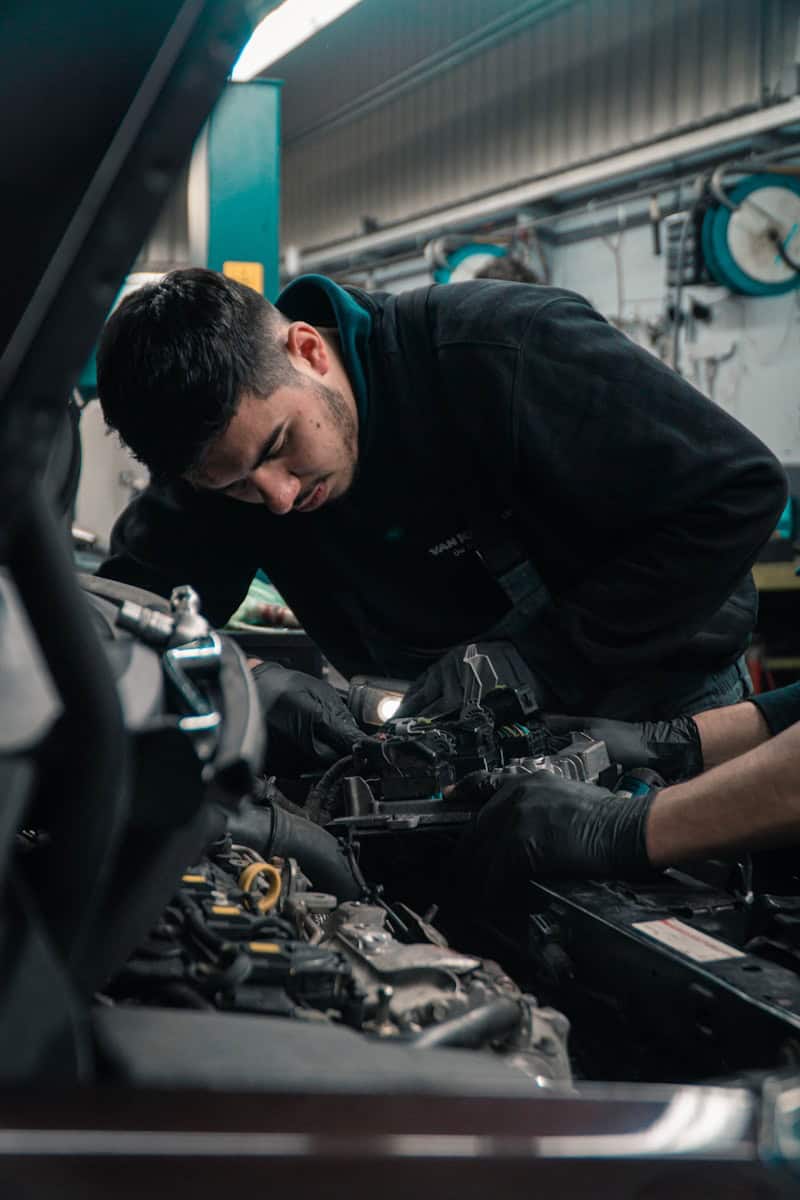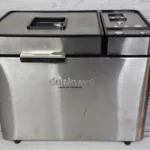When the check engine light in a car turns on, it can indicate various issues. One common problem is the P0420 code. This code means that the catalyst system efficiency is below the expected level for Bank 1. The catalyst system helps reduce the car’s pollution. The P0420 code is connected to the catalytic converter, which cleans up harmful gases before they exit the exhaust. This code appears when the converter is not working as well as it should. This problem can lead to worse gas mileage and might harm the car’s engine if not fixed. To solve this issue, mechanics will inspect the catalytic converter and other parts, like oxygen sensors. It’s important to address the P0420 code promptly. Fixing it helps ensure the car runs smoothly and remains good for the environment.
P0420 Engine Code: Causes, Symptoms, and Solutions
What Does the P0420 Code Mean?
In simple terms, the P0420 code indicates that your vehicle’s catalytic converter, a crucial emissions control device, is not operating at its full potential. The code is triggered when the oxygen sensors (upstream and downstream of the converter) detect that the converter isn’t efficiently reducing harmful exhaust gases. This can have various causes, ranging from a faulty catalytic converter to issues in the engine or exhaust system.
Common Causes of P0420
While a failing catalytic converter is the most common culprit, several other factors can contribute to the P0420 code:
Engine-Related Issues
- Misfiring Spark Plugs: A misfire can send unburned fuel to the converter, overwhelming it and reducing its efficiency.
- Leaky Fuel Injectors: Leaking injectors can cause a rich fuel mixture, similarly harming the converter.
- Engine Coolant Leaks: Coolant entering the combustion chamber can damage the converter’s internal structure.
Exhaust System Issues
- Exhaust Leaks: Leaks before the converter can allow unmetered air into the system, disrupting the sensor readings.
- Damaged Oxygen Sensors: Faulty sensors can send inaccurate signals, triggering the P0420 code even if the converter is working properly.
Catalytic Converter Issues
- Physical Damage: A damaged converter (e.g., from road debris) can impair its performance.
- Contamination: Engine oil or coolant entering the converter can coat its internal surfaces, reducing its effectiveness.
Symptoms of P0420
The P0420 code might not always be accompanied by noticeable symptoms, but some common signs include:
- Check Engine Light: The most obvious indicator is the illumination of the check engine light on your dashboard.
- Reduced Fuel Efficiency: A less efficient converter can lead to increased fuel consumption.
- Failed Emissions Test: The P0420 code is a common cause of failing an emissions test.
- Rotten Egg Smell: In some cases, you might notice a sulfur-like smell from the exhaust, indicating a malfunctioning converter.
Diagnosing and Fixing P0420
Diagnosing the exact cause of the P0420 code requires a systematic approach:
- Check for Other Codes: Use an OBD-II scanner to check for other trouble codes that might be contributing to the P0420.
- Inspect Exhaust System: Look for leaks, damaged components, or loose connections in the exhaust system.
- Examine Engine Performance: Check for misfires, leaks, or other engine issues.
- Test Oxygen Sensors: Use a multimeter or an OBD-II scanner to test the oxygen sensors for proper operation.
- Inspect Catalytic Converter: Visually inspect the converter for damage or contamination.
- Professional Diagnosis: If you’re unable to pinpoint the issue, consult a qualified mechanic for further diagnosis and repair.
Cost of Repairing P0420
The cost of fixing the P0420 code can vary significantly depending on the underlying cause:
| Issue | Estimated Cost (Parts & Labor) |
|---|---|
| Oxygen Sensor | $150 – $300 |
| Spark Plug | $50 – $150 |
| Exhaust Leak Repair | $100 – $500 |
| Catalytic Converter | $500 – $2500 |
Prevention Tips
While not all P0420 causes are preventable, you can take steps to minimize the risk:
- Regular Maintenance: Follow the manufacturer’s recommended maintenance schedule for your vehicle.
- Address Engine Issues Promptly: Fix misfires, leaks, or other engine problems as soon as they arise.
- Use Quality Fuel: Avoid using low-quality or contaminated fuel, which can damage the converter.
- Warm-Up Engine: Allow your engine to warm up before driving aggressively.
Understanding Engine Code P0420
When your car’s computer, the powertrain control module (PCM), shows the code P0420, it means there is a problem. This issue is with the part called a catalytic converter in Bank 1. The catalytic converter cleans harmful parts from the car’s exhaust to make it less polluting.
Key Points to Know:
PCM and ECM: PCM stands for Powertrain Control Module. It’s sometimes called an ECM, which is an Engine Control Module. This is the car’s brain.
Bank 1: This is the side of the engine that has the first cylinder.
Oxygen Sensors: Your car has these sensors before and after the catalytic converter. They check the gases to make sure the converter is working.
Catalyst System Efficiency: This is how well the catalytic converter cleans the exhaust. If it’s below a set level, P0420 shows up.
DTC: DTC means Diagnostic Trouble Code. It helps find car problems.
The PCM uses signals from the oxygen sensors. One sensor is before the converter and one is after it. These sensors tell the PCM how many pollutants are in the exhaust. If things don’t match up to what is expected, the P0420 code appears. This can mean the catalytic converter is not cleaning properly.
Sometimes the P0420 code could be due to a false alarm. This happens if one of the oxygen sensors is faulty. This does not always mean the converter is bad. To get things right, a mechanic must check it out.
With this code, the car might still drive fine. But the engine might not work as well as it should. In time, this can cause more problems. It’s important to fix this to keep the car running well and to pass emissions tests.
Troubleshooting and Repair
Before diving into the process, understand that troubleshooting a P0420 code involves checking the catalytic converter, oxygen sensors, and related components. Proper tools and a methodical approach are key for accurate diagnosis and repair.
Identifying Common Failures
Catalytic Converter: A bad catalytic converter is a common issue behind a P0420 code. Check for:
- Rattling sounds: This indicates internal damage.
- Discoloration or warping: Signs of overheating.
Oxygen Sensors:
- Use a multimeter to test the sensors’ voltages. Both the upstream and downstream sensors should give different readings if they’re working correctly.
- Inspect the wires for damage or loose connections.
Exhaust Leaks:
- Listen for hissing noises that could indicate a leak in the exhaust manifold or pipes.
- Visually inspect the exhaust system for holes or rust damage.
Repair and Maintenance Tips
Catalytic Converter Replacement:
- If the catalytic converter is confirmed bad, it must be replaced.
- Check the warranty; some converters are covered for up to 8 years.
Oxygen Sensors:
- If sensors are faulty, replace them.
- Ensure wiring and connectors are in good shape during replacement.
Addressing Exhaust Leaks:
- Repair any leaks in the exhaust system promptly.
- This may involve welding holes or replacing damaged exhaust pipes or mufflers.
Other Maintenance Tips:
- Keep the air-fuel mixture well-balanced to prevent future issues.
- Routine checks can prevent misfires and maintain fuel efficiency.
By following these tips and conducting a thorough check of the suspect components, you should be able to resolve the issues causing the P0420 code confidently and effectively.
Frequently Asked Questions
This section aims to answer common queries about the P0420 code.
What are common causes of a catalyst system efficiency below threshold (bank 1) indication?
Several factors can lead to this issue. These include a failing catalytic converter, faulty oxygen (O2) sensors, exhaust leaks, or engine problems.
Is it possible to drive with a vehicle showing a catalyst system efficiency code, and if so, for how long?
You can drive with this code, but it’s not wise. It can harm other car parts if you wait too long.
Can a failing O2 sensor trigger a catalyst efficiency code, and what is the likelihood?
Yes, a failing O2 sensor may cause this code. It is a common reason the code appears.
What steps should one take to address a catalyst system efficiency code in a vehicle?
First, check for other codes. Then inspect the O2 sensors, exhaust system, and catalytic converter.
Are there cost-effective ways to permanently fix a catalyst efficiency issue?
Yes, there are ways. These include repairing any leaks and replacing bad O2 sensors. Sometimes fuel additives help.
Does a catalyst system efficiency code invariably mean replacement of the catalytic converter is necessary?
Not always. Check other parts like O2 sensors before you replace the catalytic converter.







